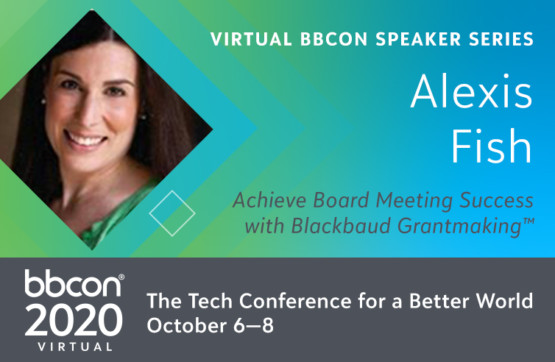Best Practices for Virtual Foundation Board Meetings

The idea of virtual board meetings has been around since conference calls first began. However, these often were only as a last resort and gave way to board retreat weekends filled with activities, catered meals and a focus on community building. The goal of these activities is to help form strong relationships to help facilitate honest and impactful decisions in the board room.
As veteran organizational strategist and author Nanette R. Fridman asks, “Do you know where the most honest, insightful and productive board conversations historically took place pre-Covid? If you just said the parking lot, then you’re likely a veteran board member or board observer.” Why is this traditional behavior so true? When people feel comfortable with each other, and understand each other, then meaningful conversations and decisions can happen.
Creating these relationships in a remote or virtual environment was once thought to be impossible. Even early technology adopters still preferred in–person meetings for the voting sessions, and those who were hesitant to adopt new technology often times held the rest of the group back from any kind of official technology adoption.
This year, due to health and safety regulations related to COVID-19, in-person gatherings were severely restricted and almost all travel was canceled. However, board members were busier than ever. When there is need, philanthropy steps up. According to the latest report by Candid and the Center for Disaster Philanthropy, in the first half of 2020 more than $11.9 Billion was awarded globally for COVID-19 related needs. Let’s look at how that breaks down:
- Corporations accounted for nearly two-thirds of funding
- Community foundations awarded more grants than any other grantmaker type (49 percent of total awards)
- Gifts by independent foundations accounted for at least $1.7 billion
- Proportionately little institutional funding was explicitly designated for specific populations and vulnerable communities
- 775 foundations committed to flexible funding in response to COVID-19
What does all of this giving have in common? The dollars given and the decisions made to enable flexible funding are all the result of board meetings.
Boards were forced to adjust quickly and find a way to meet without being in the same space. Using remote meeting technology, cameras, computers, phones, electronic board book technology and shared information platforms, board members got together and got funds out the door. What was the most surprising result of all of these virtual meetings? The board members liked it. Our customers report higher engagement, more meaningful feedback, streamlined administrative tasks and overall positive feedback from the board. One review panel member with the United Way of Southeastern Connecticut said using an online reviewer portal for their remote meeting was, “By far the easiest process we have had in my 6+ years on review panels.”
How are foundations and nonprofits achieving these results? Below are key tips gathered from both customers and board members.
- Cameras on
Embrace the virtual technology. Don’t just try and hold an in-person board meeting on a virtual platform. This can be done by hosting a virtual ice breaker and by using video conferencing technology to enable board members to show each other a little bit of themselves as if they were in a board room together. A little show and tell can go a long way in helping people find connections with each other.
- Support board members with pre-meeting sessions and materials
So many portions of the board meeting can be done in advance using modern technology. Not only could board members review grant requests, but they can also discuss specific aspects with each other or even vote using board book technology. Keeping everything in one platform will make it easy for the board chair to review and ratify at the actual meeting.
- Review your bylaws to understand what you can do with a virtual quorum
Make sure to review your bylaws well before the meeting and address any needed changes upfront. Many bylaws were not created with virtual meetings in mind and might require adjustment to accommodate virtual meetings. You want to make sure well before the meeting starts that everything you do at the meeting will stand after everyone logs off.
- Shake it up!
Invite special guests to come and pop into the meeting. With everything being virtual we have seen examples of all kinds of guests from, nonprofits giving quick cameos, influencers and experts holding Q&A sessions, to even a lama popping in for a quick visit. Creating shared experiences remotely, helps to build comradery and open people up to having honest conversations.
- Have breakout rooms
Most kinds of video conferencing software allows members to break out from the main room into small chat groups. Using this feature to ask groups of people to complete a task together can help to shorten the length of meetings and is a great way to encourage people to speak up who might otherwise stay quiet. We have seen the same effect with using the chat feature and enabling board members to write down their comments or questions without interrupting the current speaker.
According to a USA Today article, virtual conferences and remote work was going so well, that most businesses will all be doing some form of virtual work for the ongoing future.
We have heard similar sentiments from our customers. As the world continues to change, the numbers show that we will all remain connected globally through some version of virtual meetings.
Come join me for my bbcon 2020 virtual session “Achieve Board Meeting Success with Blackbaud Grantmaking™.” I look forward to showing you what a virtual board meeting could look like as we get deep with the technology and hear from both clients and board members about what has worked for them. I’ll see you there. Register today!

